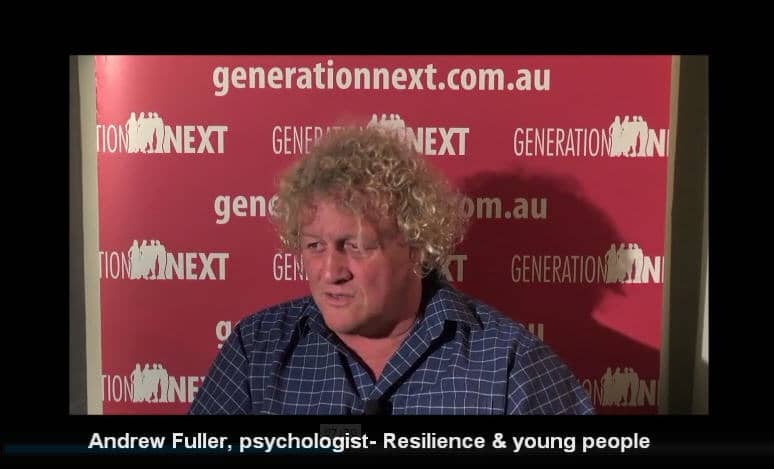As parents we want to protect our kids from all bad things from happening to them, but unfortunately we can’t be there for them all the time and, what’s more, as they grow older we need to be there for them in a different way – not cushioning them from falling, but helping them to find the resolve to pick themselves up.
Our kids will deal with problems big and small – ranging from adapting to a new classroom, to bullying by classmates, or even more traumatic events. To boot, there are the uncertainties of growing up. The ability to thrive despite these challenges depends on your child’s resilience.

“Resilience is the fine art of being able to bungee jump through life. The pitfalls are still there but it is as if you have an elasticated rope around your middle that helps you bounce back from hard times.” Dr Andrew Fuller, clinical psychologist, The Resilience Foundation.
In this video, Dr Fuller speaks about resilience in today’s generation of kids:
Psychologists have identified some of the factors that make someone resilient, among them a positive attitude, optimism, the ability to regulate emotions, and the ability to see failure as a form of helpful feedback. Resilient people do not let adversity define them. They find resilience by moving towards a goal beyond themselves, transcending pain and grief by perceiving bad times as a temporary state of affairs.
Resilience isn’t a birthright.It can be taught. Parents can equip their kids with the skills to handle the unexpected. It’s important for your child to know how to turn things around when the going gets tough.
So what can parents do to help their kids develop resilience?
- Make connections: teach your child how to make friends. Help them learn about empathy and seeing things from their friend’s perspective. Encourage your child to be a friend in order to get friends. Make sure you are there for your child to talk about the inevitable disappointments and hurts.
- Engage your child in helping others: when children feel helpless they can be empowered by helping others. It can be as easy as asking your child for help with a task that he or she masters, or you may want to consider getting involved as a family in age-appropriate volunteer work.
- Maintain a daily routine: sticking to a routine is comforting to kids, especially younger kids who crave structure in their lives. Encourage your kids to starting taking charge of their own routines.
- Take a break: teach your child to focus on something besides what’s worrying him or her. Help your child take a break from whatever it is that is worrying them, be it the news, the internet or overheard conversations.
- Teach your child self-care: set a good example and teach your child the importance of eating properly, exercising and sleeping enough. Ensure your child has “down time” to relax and play.
- Set goals: teach your child to set goals for herself or himself and how to move towards those, one step at a time. Praise them for their accomplishments, and recognize the challenges they faced in getting there.
- Nurture a positive self-view: speak with your child about the hardships they’ve had to handle in the past and help him or her understand that by moving past these challenges they have built up their strength to handle future challenges. Help your child learn to trust herself or himself to solve problems and make appropriate decisions. Teach your child to see the humor in life, and the ability to laugh at one’s self.
- Keep things in perspective: even when facing painful events, help your child look at the situation from a broader context and to keep a long-term perspective. Help him or her see that there is a future behind the current situation. A positive outlook enables your child to see the good things in life and keep going in the hardest times.
- Find opportunities for self-discovery: tough times are often those when children learn the most about themselves. Help your child see “what he/she is made of” during these times.
- Accept that change is part of life: change is scary for kids. Help your child to understand that change is a part of life and that they can set new goals for themselves, if need be.


